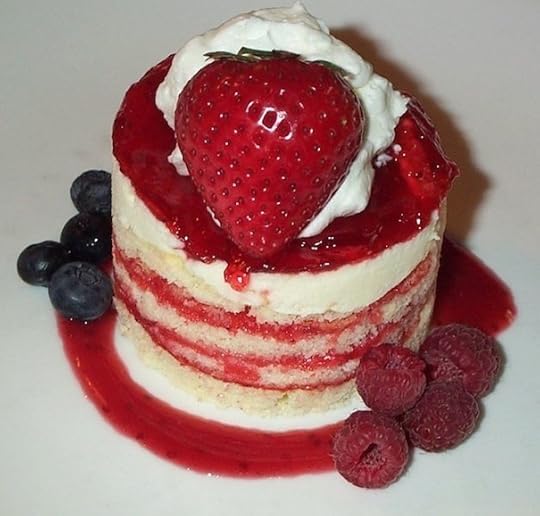Scones – The Definitive Version
The good thing about having a blog devoted to books is that you can write about absolutely any topic you like, knowing there will be a book about it, or at least a book containing some references to it. This is why I’m able to direct your attention to this article on the correct way to eat scones, knowing it is a perfectly valid literary topic, because several of my own books mention people making and/or eating scones.
I’m afraid Tony Naylor gets off to a bad start when he claims the word ‘scone’ rhymes with ‘cone’, when of course, it rhymes with ‘gone’. He seems to think only Hyacinth Bucket types pronounce it as ‘skon’, which seems the wrong way round to me – surely the pseudo-posh pronunciation is a drawled-out ‘skohhhn’? Fortunately, there are a lot of people who are able to put Mr Naylor right in the comments section of his article. And he gets everything else right, explaining that scones should never, ever contain fruit1 or be dusted with icing sugar or sullied with a blob of disgusting clotted cream. I was interested to read that he believes the cream should go on first, then the jam, rather than the other way round, on the grounds of both aesthetics and taste (“by plopping the jam on top you allow its flavour to shine through . . . I assume it is something to do with fat coating your mouth first, and inhibiting your tastebuds”). Wouldn’t the jam fall off? It probably depends on how much cream and jam you use. I should conduct a scientific experiment to investigate this important issue. Although it seems this scone eater has decided to have a bet each way, with jam above and below the cream:

A scone with jam and cream and even more jam. Creative Commons Licensed image by Foowee.
Anyway, I wish this article had existed a few years ago, when the North American edition of A Brief History of Montmaray was being prepared, because then I could have directed my American editor towards it and saved myself a lot of time. She was confused by the manuscript’s references to ‘scones’ because in the United States, they do not have scones. Tragic, isn’t it? We eventually established that the U.S. equivalent is the ‘biscuit’, a small, round, bread-like cake made with baking soda, although I think that’s regarded as a savoury food, something to eat with a main meal, like a bread roll? (All of my knowledge of American biscuits comes from American novelists, mostly Anne Tyler. In Dinner at the Homesick Restaurant, Ruth makes “beaten biscuits genuinely beat on a stump with the back of an ax”, while Evie in A Slipping-Down Life visits her former housekeeper to find out how to make biscuits with bacon drippings. Actually, now I think of it, there’s a recipe for buttermilk biscuits in Fried Green Tomatoes at the Whistlestop Cafe, too. Are biscuits a Southern food?) This led to an editorial discussion about what Australians mean by ‘biscuit’, which is the equivalent of an American ‘cookie’, although we do have chocolate-chip cookies2. The notion of Sophie FitzOsborne baking ‘oat biscuits’ was so baffling to the Americans that I took it out of the American edition altogether (it was ‘oat cakes’ originally, but even my Australian editor was perplexed by that). And then I learned what a strawberry shortcake is, and that it has nothing to do with shortbread. Remember the Strawberry Shortcake doll craze of the 1980s? I think there were even some Strawberry Shortcake books. See, everything is related to books.

A strawberry shortcake. Creative Commons Licensed image by Stuart Spivack.
_____
The exception is the pumpkin scone, which should be served with butter, rather than jam and cream. ↩
But Anzac biscuits are definitely biscuits and not cookies, despite the views of some baked-goods manufacturers. ↩
 newest »
newest »




I love your Montmaray series, it was a wonderful antidote to my Downton Abbey "withdrawal" and I can't wait for your next book. Have you read Philip Rock's Passing Bells series?